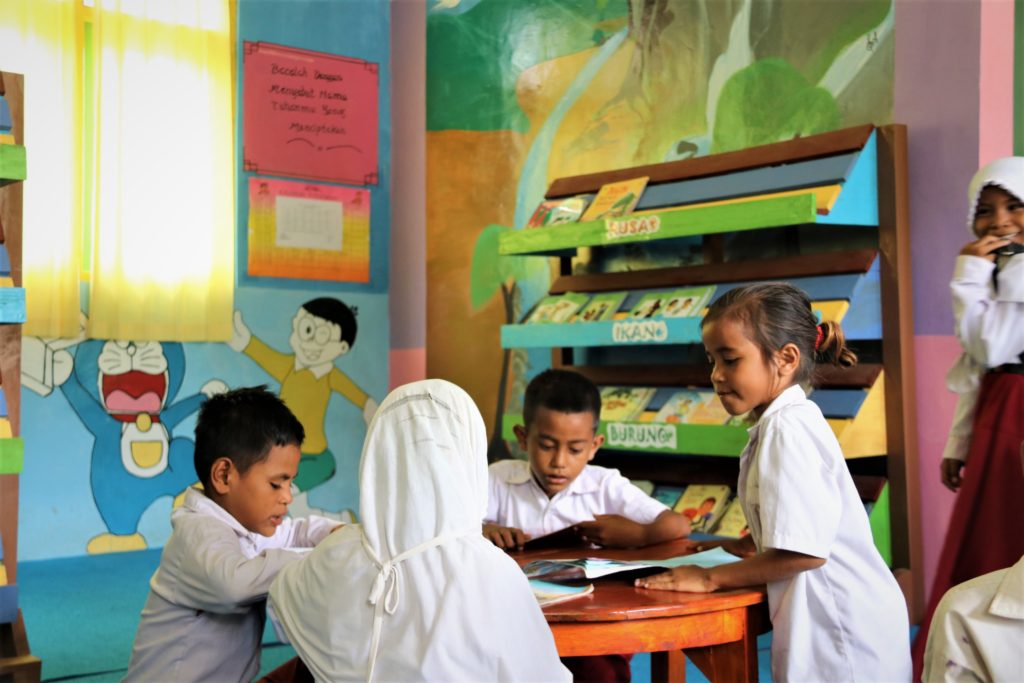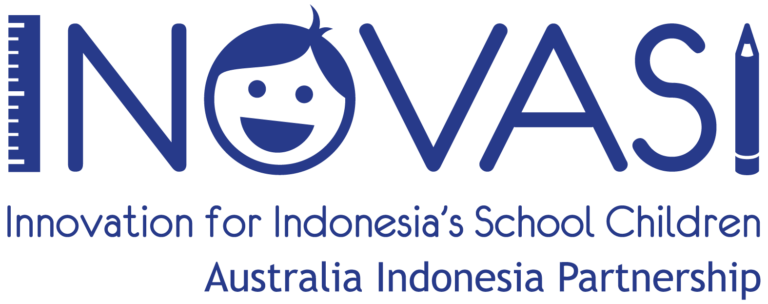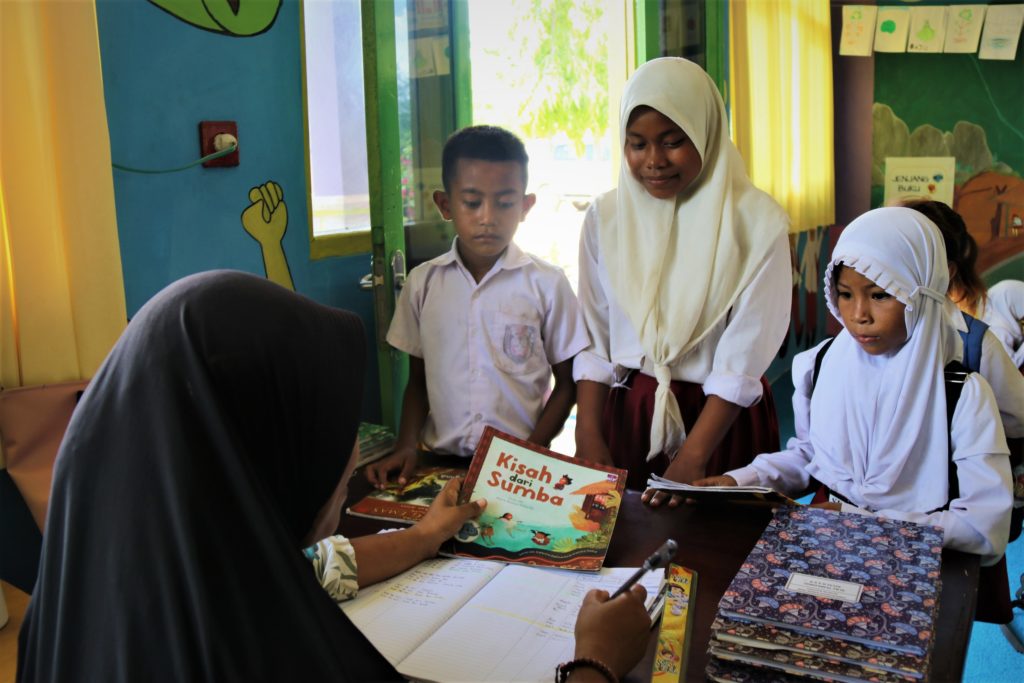
According to Government Regulation Number 24 of 2014, every school is required to have a library. However, 201 Statistics Agency (BPS) data shows that not all schools in Indonesia have their own library, as reported by Katadata.co.id.
According to the report, the level of education with the least number of school libraries is elementary school in spite of being the largest educational unit among all levels of education. Of the 148,673 elementary schools in Indonesia, only 66.14% have libraries.
In addition to schools which do not have libraries, schools that already have libraries also face a number of problems, such as a lack of contextual non-text books, no special librarians, no activities to foster children’s interest in reading in the library, and the function of the library turning into a warehouse.
This fact can be found in a few INOVASI partner schools in East Nusa Tenggara (NTT) Province. In SD Islam Mananga in Central Sumba district, for example. Muh. Subhan Satirando, the principal at this elementary school, said that before there were only textbooks stacked in cardboard boxes. Students only visited the library when they were asked to and they were just flipping through the pages.
The same thing occurred in SD Negeri Lokory in West Sumba district. In fact, according to the principal, Paulus Pandang, the library building used to serve as a warehouse to store school books and equipment.
Fostering children’s reading interest through library
In Phase I (2018-2019), INOVASI worked together with Rainbow Reading Garden (Taman Bacaan Pelangi, or TBP) to build two child-friendly libraries in each of the four chosen districts in Sumba Island.
Through this cooperation, the libraries such as those in SD Islam Mananga dan SD Negeri Lokory were renovated and built in a way that were interesting to the children.
More than 1,000 story books with various titles were also provided in each library, grouped by level of difficulty, and arranged on shelves so that students were able to easily reach them.
All elements of the school, from librarians, teachers to school principals, were also given workshops on good library management and holding a reading program in the library.
Each study group had a special library visit schedule. During the visit, they carried out different reading activities, namely reading aloud, reading together, reading in pairs, and reading independently.
Students were also required to borrow books for a certain time to read at home. According to the teachers at all partner primary schools, students were often seen reading in the neighbourhood around their homes.
Several schools in the four districts also followed the example of what was done in 8 schools with this model library through BOS (School Operational Assistance) funding.
Rebuilding the Covid-19 Pre-Pandemic Momentum
Covid-19 pandemic forced learning activities in school to stop. Libraries were closed. Children studied from home through online and offline gathering spots. However, students’ study hours dramatically decreased. From the average of above 3 – 4 hours for early grades, it became 30 minutes. The result was that students experienced high learning loss.
This condition was exacerbated by the unavailability of reading books at students’ houses, hence students’ reading habit which had been built through reading activities in the library gradually disappeared.
During school closure, child-friendly library in SD Negeri Lokory was locked. The librarian contracted by the school was no longer employed. There were no activities. Dust began to accumulate above books, shelves, desks and carpets.
The same situation was also found in SD Islam Mananga. Even though the school was reopened several times during the PPKM period, they did not conduct any activities in the library. This was due to the limited time spent by the students in school. It was only to inform them about tasks that they had to do next.
“Perhaps they children do read at home, but only textbooks that they received from the teachers,” said Fadillah Pua Nggolo, a grade 3 teacher in SD Islam Mananga.
After each district’s education office released a circular to officially reopen schools last September 2021, the activities in the library started too. Even though students have not been to school for a long time, their enthusiasm in reading in the library was still high.
“After schools were reopened, the children were very enthusiastic in reading books in the library. In fact, a lot of these students have already borrowed the books,” revealed Albertina Bili, a grade 1 teacher in SD Negeri Lokory.
To support the operations of the library, the school appointed Robinson Bora, a subject teacher, to become the new librarian in SD Negeri Lokory. Before that, he has also been a homeroom teacher. In fact, he was a librarian once. According to him, there were two main reasons why the children were enthusiastic to come back to the library.
“First, this library is very comfortable for students to learn because the floor has been carpeted. It also has desks and cushions for the students. There are also beautiful paintings on the wall. Secondly, we also have a variety of story book collections which are interesting,” Robinson explained.
Meanwhile, Halifah Husen, a librarian in SD Islam Mananga admitted that she was excited to be back and serve the children in the library. “I am happy to be back and serve the children. Alhamdulillah, this September, there are a lot of children who have borrowed the books,” she said.
Even though the schools still applied limited face to face learning, the amount of time children spent in the school was longer than the time they spent during the opening-closing period. Children were given 15 minutes to read in the library. In addition, they were able to borrow books and bring them home so that they have more flexibility to read at home.
Both Robinson and Halifah hoped that through the library students’ reading interest and understanding would continue to develop.







